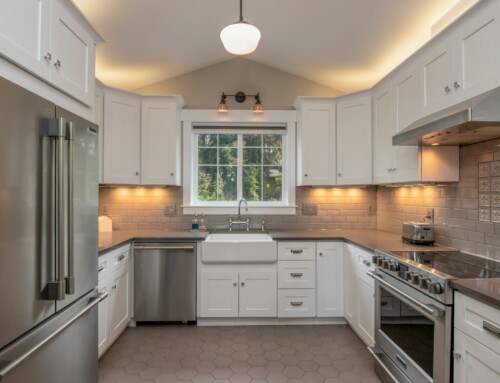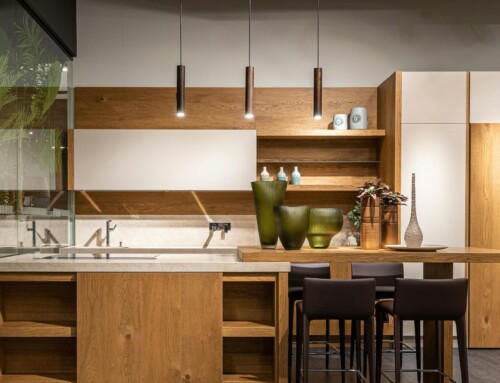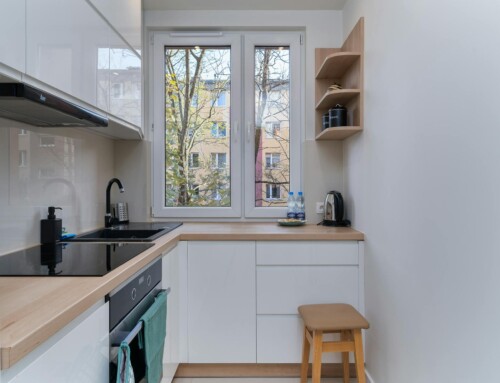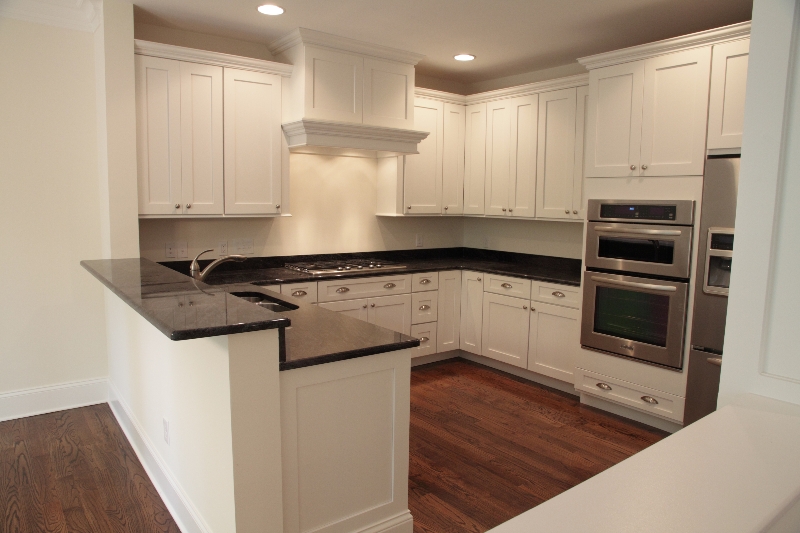
One of the most important elements of a kitchen remodel is the flooring. With so many options, it can be hard to decide on the right kind of material. Not only does it have to suit your home’s needs, but of course, it has to look great. Read on for factors to consider when selecting and installing new kitchen floors.
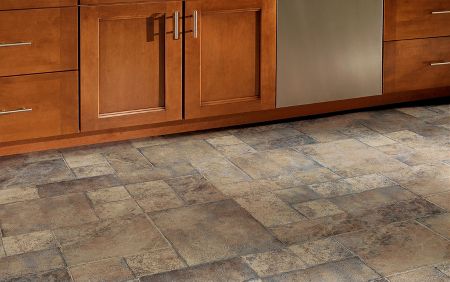
Material:
Wood – Often not the first choice for kitchen flooring, wood offers durability and aesthetic appeal at the same time. If your kitchen is open to a living, dining or great room the features wood floors, you may want to keep the design’s cohesion by selecting the same type of wood floors for your kitchen. Keep in mind that if water sits on a wood floor for a prolonged period of time warping may occur.
Stone – The more luxurious option for kitchen flooring, stone is more expensive because of its beautiful and natural look. These stones range in appearance and price, with everything from slate to marble to travertine. With so many types available, it’s no wonder so many people choose stone as their kitchen flooring.
Tile – Whether artificial or natural, tile flooring is the more practical option for homeowners. A wide range of prices make tile a more affordable option for people as well. Tile also makes for one of the easier do-it-yourself installation options of kitchen flooring. Porcelain is an excellent choice and comes in variety of colors and styles.
Artificial – Materials like laminate or vinyl are a common option for low budget remodel or designs, but keep in mind they can offer the look of some of the higher end materials like wood or natural tile. For example, the right kind of vinyl flooring can mimic natural hardwood almost perfectly for a fraction of the price. Adding to their appeal, artificial materials are also very durable.
Other – Unconventional materials like cork, leather, concrete, or bamboo lend a custom look to kitchen floors. If you’re looking for an eco-friendly option, cork or bamboo are great. Cork feels like suede to the feet while bamboo looks beautiful in almost any setting. Polished concrete, one of the most hygienic flooring options, works with a variety of industrial kitchen designs and is very durable. Leather tiling, while very luxurious and expensive, can be as durable as laminate and as comfortable as a rug.
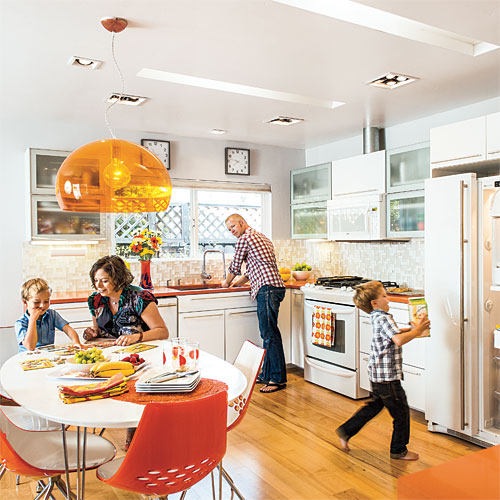
Factors to Consider:
Traffic & Usage – When deciding on how durable you’ll need your kitchen flooring to be, think about how often your kitchen is used. Is this flooring going into a kitchen who sees several visitors a day? Pets that may scuff the floors at a faster rate, so it’s important to consider them as well. Also, whether or not the kitchen will be used in a private home or a business (like a restaurant) holds tremendous weight in the decision process.
Water – Many people forget to consider the wear that water takes on many flooring materials. If you have a pool in the yard which your kitchen door leads out to, there may be more water on your floors than you know. Think about how often splashes and spills occur in your kitchen to make the best decision about water-resistant materials.
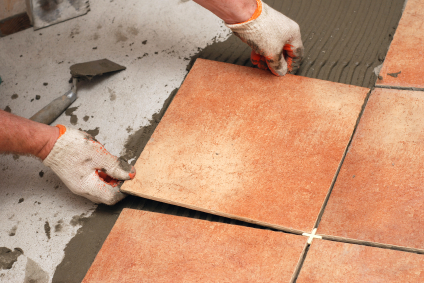
Installation:
Many handy homeowners may want to take the chance and install kitchen flooring themselves to save on costs. This may end up costing you more in the long run than you think. Faulty separation and messing prepping can result in a shabby finished product, or even damaged materials. Unless you or someone you know is a licensed or certified flooring installer, leave this job to the pros.
_________________________________________________
Post by: Izabella De Souza

